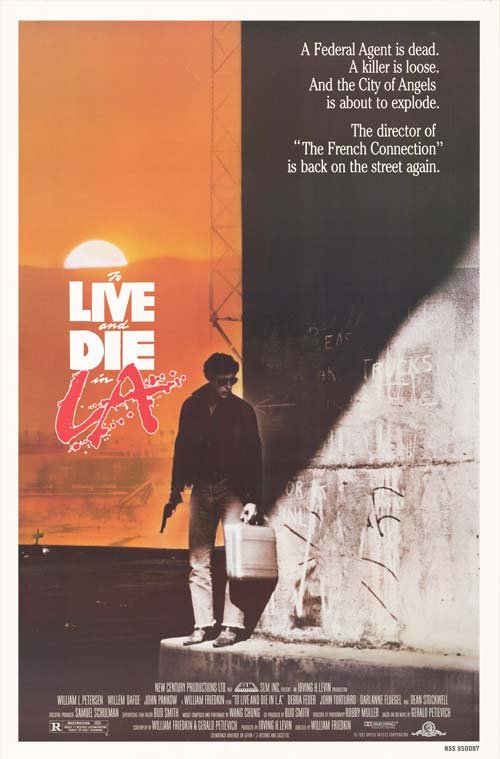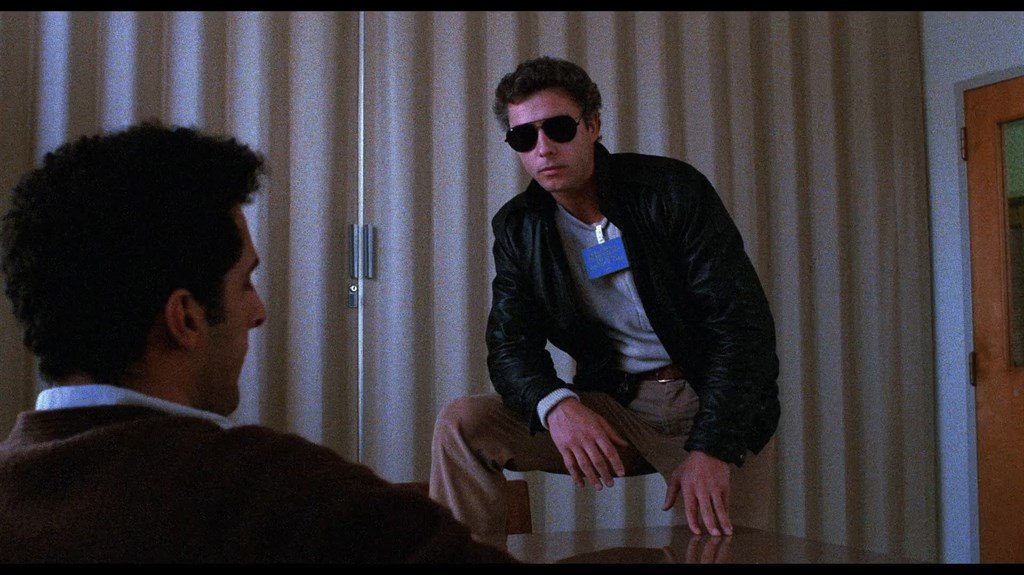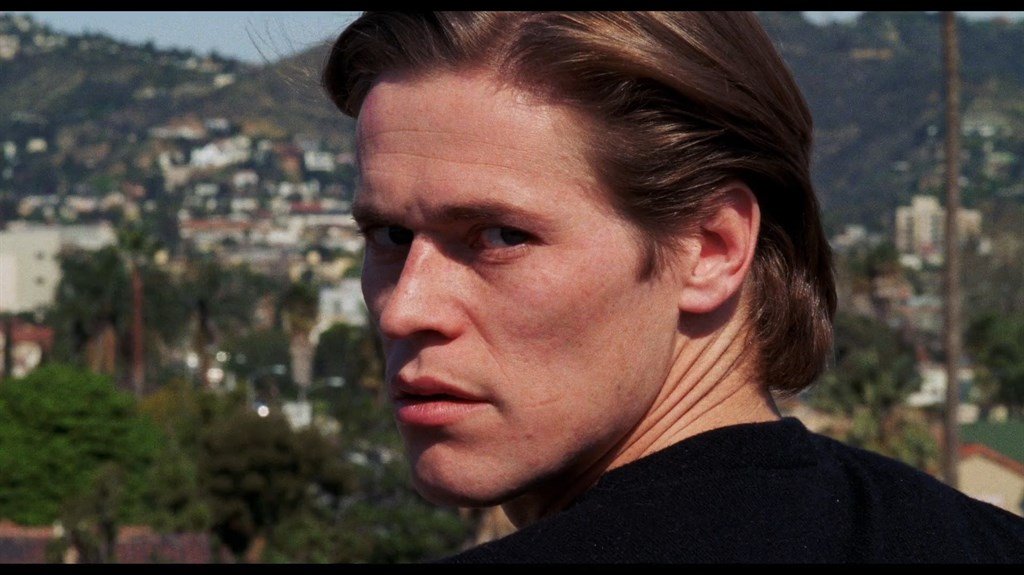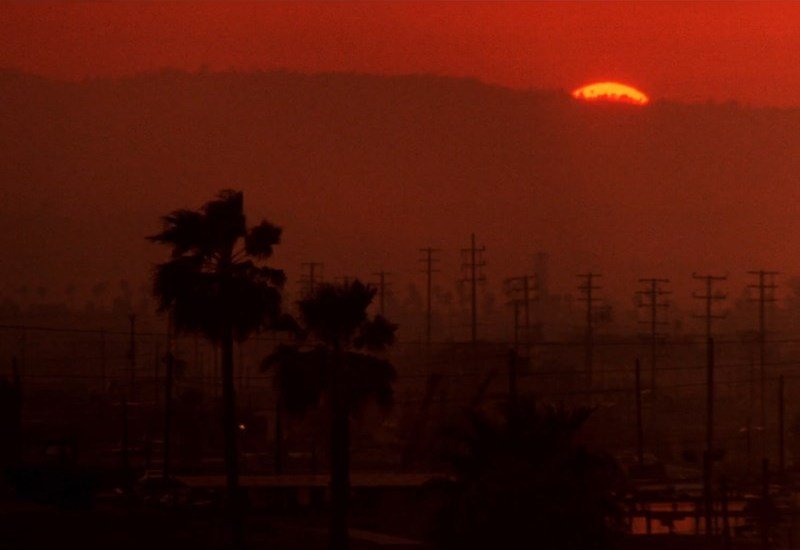TO LIVE AND DIE IN L.A.: A Subversive Crime Story In Hollywood Cop Movie Clothes
The '80s were not as hospitable to director William Friedkin as the '70s were. He didn't enjoy any breakout hits like The Exorcist or The French Connection during this era: instead, he was stung by controversy with Cruising and then made infrequent movies that either didn't connect with audiences or got buried like  Rampage. To Live And Die In L.A. was one of those movies that didn't score critical or commercial success... and it's a damn shame as it is one of his best films, a film that used an up-to-date style to communicate a subversive vision of the crime story on its own hard-edged terms.The fiery core To Live And Die In L.A. revolves around is Richard Chance (William Petersen), a hot-tempered Secret Service agent who loses his moral center of gravity when his partner is murdered. The culprit is Eric Masters (Willem Dafoe), a self-styled aesthete who uses his artist career as a front for his real livelihood, counterfeiting money. He's too slick to leave any proof behind but Chance doesn't care: he sets out to pursue Masters in defiance of his bosses and the rules. Caught in the middle are his new partner Vukovich (John Pankow) and Chance's informant/sometime lover Ruth (Darlanne Fluegel).The aforementioned plot might sound like another Dirty Harry derivative but it plays out in a different, challenging way. For starters, the script by Friedkin and Gerard Petievich, from the latter's novel, doesn't give the audience a conventional good-bad dichotomy. Chance gets crueler, more amoral and suicidally risky as he proceeds on his quest while Masters is portrayed as his mirror image, someone who thinks he lives by a code but is all too willing to use others for his own ends. As the story approaches its end, it suggests the difference between the two sides is a matter of semantics and no one can resist getting caught in the undertow of their power plays.
Rampage. To Live And Die In L.A. was one of those movies that didn't score critical or commercial success... and it's a damn shame as it is one of his best films, a film that used an up-to-date style to communicate a subversive vision of the crime story on its own hard-edged terms.The fiery core To Live And Die In L.A. revolves around is Richard Chance (William Petersen), a hot-tempered Secret Service agent who loses his moral center of gravity when his partner is murdered. The culprit is Eric Masters (Willem Dafoe), a self-styled aesthete who uses his artist career as a front for his real livelihood, counterfeiting money. He's too slick to leave any proof behind but Chance doesn't care: he sets out to pursue Masters in defiance of his bosses and the rules. Caught in the middle are his new partner Vukovich (John Pankow) and Chance's informant/sometime lover Ruth (Darlanne Fluegel).The aforementioned plot might sound like another Dirty Harry derivative but it plays out in a different, challenging way. For starters, the script by Friedkin and Gerard Petievich, from the latter's novel, doesn't give the audience a conventional good-bad dichotomy. Chance gets crueler, more amoral and suicidally risky as he proceeds on his quest while Masters is portrayed as his mirror image, someone who thinks he lives by a code but is all too willing to use others for his own ends. As the story approaches its end, it suggests the difference between the two sides is a matter of semantics and no one can resist getting caught in the undertow of their power plays. Friedkin's direction cleverly seduces the audience into its grim worldview by wrapping it in a glittering style that offsets its bleak take on the crime genre: the stunning cinematography by Robby Muller finds the beauty in urban grit in a way similar to his work in Repo Man and the pulsating, synth-layered rock score by Wang Chung is one of the most underrated pop scores to any film from this era. Friedkin uses their work to create some nerve-jangling action scenes along the way, including a masterful car chase that involves going the wrong way down a busy L.A. freeway and a fiery warehouse-set finale.To Live And Die In L.A. also keeps the viewer engaged with an ace cast of character actors and soon-to-be stars. Petersen brings equal amounts of conviction and intensity to his antihero role, giving a surface charm to his ever-more-chilling actions, while Dafoe is the picture of icy, minimalist cool as his nemesis. Pankow serves as the audience identification figure, with his nervous reactions to his partner's carnage feeling all too believable to viewers, and Fluegel does a low-key, sympathetic variation on the usual informant character. Their work is supported by an array of vivid supporting turns: Dean Stockwell as a calmly amoral defense lawyer, John Turturro as a jittery crime associate to Masters, Debra Feuer as a resourceful moll for Masters and erstwhile Cannon action star Steve James as a prison-connected crook who lives to regret teaming up with Masters.
Friedkin's direction cleverly seduces the audience into its grim worldview by wrapping it in a glittering style that offsets its bleak take on the crime genre: the stunning cinematography by Robby Muller finds the beauty in urban grit in a way similar to his work in Repo Man and the pulsating, synth-layered rock score by Wang Chung is one of the most underrated pop scores to any film from this era. Friedkin uses their work to create some nerve-jangling action scenes along the way, including a masterful car chase that involves going the wrong way down a busy L.A. freeway and a fiery warehouse-set finale.To Live And Die In L.A. also keeps the viewer engaged with an ace cast of character actors and soon-to-be stars. Petersen brings equal amounts of conviction and intensity to his antihero role, giving a surface charm to his ever-more-chilling actions, while Dafoe is the picture of icy, minimalist cool as his nemesis. Pankow serves as the audience identification figure, with his nervous reactions to his partner's carnage feeling all too believable to viewers, and Fluegel does a low-key, sympathetic variation on the usual informant character. Their work is supported by an array of vivid supporting turns: Dean Stockwell as a calmly amoral defense lawyer, John Turturro as a jittery crime associate to Masters, Debra Feuer as a resourceful moll for Masters and erstwhile Cannon action star Steve James as a prison-connected crook who lives to regret teaming up with Masters. In short, To Live With Die In L.A. is a must-watch for anyone interested in Friedkin's career or challenging crime films in general. It's the sun-baked flipside of The French Connection, using its prettiness to conceal a sting that is as jagged as that of its gritty New York counterpart.
In short, To Live With Die In L.A. is a must-watch for anyone interested in Friedkin's career or challenging crime films in general. It's the sun-baked flipside of The French Connection, using its prettiness to conceal a sting that is as jagged as that of its gritty New York counterpart.


